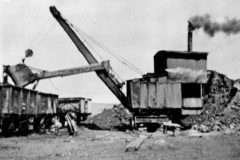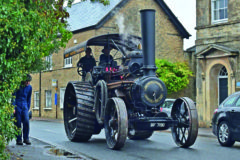New Performance Super Dexta
Posted by Chris Graham on 4th May 2021
Chris Graham spotlights the last Fordson to be built at Ford’s Dagenham factory, the New Performance Super Dexta.
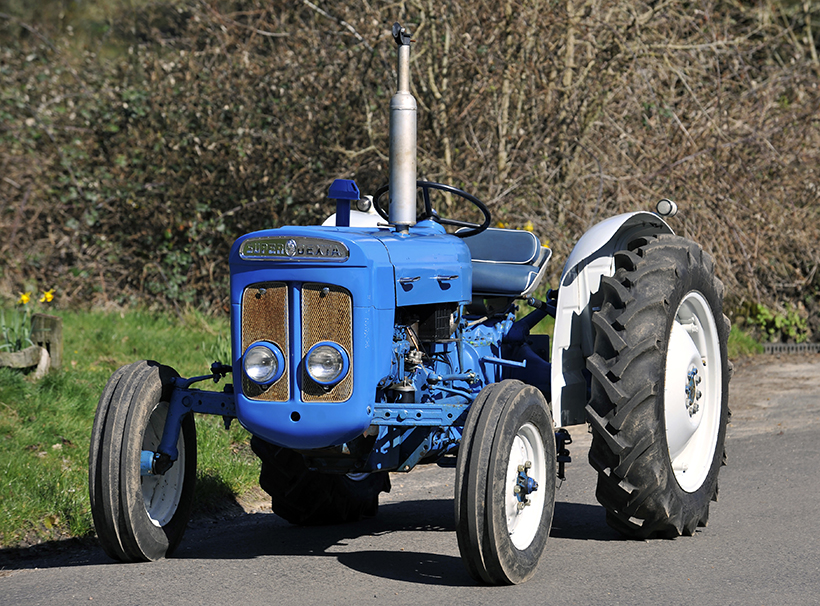
The end of an era; the New Performance Super Dexta was the last Fordson to be made at Ford’s Dagenham factory.
The three-cylinder Fordson Dexta arrived in 1957, as a ‘workmate for the Major’, as the Ford marketing men branded it. Introduced to wrestle sales from the ‘grey tractor’ market, the new model was built around a diesel-powered, Perkins P3-based three-potter, fitted with a CAV fuel injection pump and Ford-made castings. It churned-out 32hp, had a decent hydraulic system (carried over from the American-only Fordson 8N model), and was the first Fordson to be fitted with a genuinely useful draft control system for automatically varying implement height.
Dextas began rolling from the Dagenham production line in earnest in 1958, and the model proved popular from the off. Then, three years later, Ford moved the game on again, when it introduced a third tractor to its range. The Super Dexta was launched the at the 1961 Royal Smithfield Show, with extra power being its big selling point. A slight increase in engine capacity boosted output to almost 40hp; another very popular move.
Range-topper
The Dexta had been a tremendous seller for Ford, so it was only fitting that the model went out on a high. The seven-year production run was brought to a close by the Dexta’s final iteration, the most-powerful-of-all, 44.5hp New Performance Super Dexta. Resplendent in Ford’s new, corporate blue and grey colour scheme, this last of the line was unveiled before an appreciative public at the Royal Show in 1963.
But apart from the snazzy, modern-looking paint and the introduction of stickers to replace some of the model badging, the most significant change was the switch from the Simms fuel injection pump to a better, Minimec unit. Dexta production ended in 1964, as did Fordson tractor building at the Dagenham plant. In all, well over 200,000 Dextas are thought to have been sold to farmers around the world and, thankfully, the legend lives on with hundreds of examples still in loving preservation, nearly 60 years on.
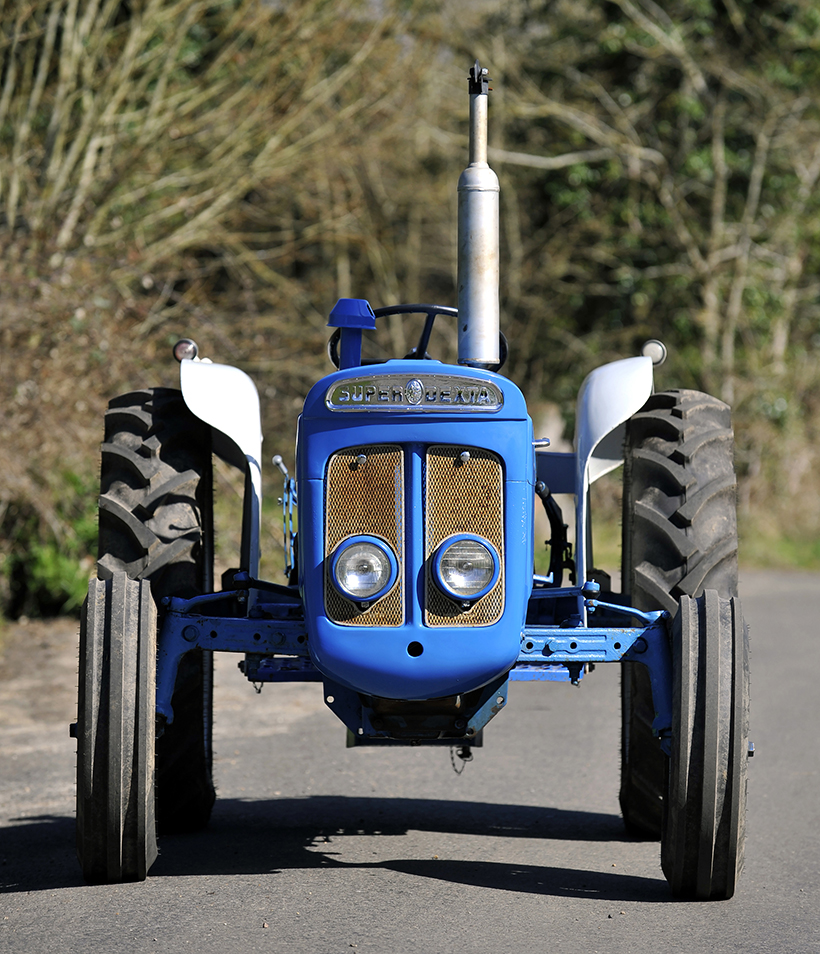
Straightforward, durable and largely reliable engineering ensure that the Dexta has stood the test of time. The most powerful, New Performance Super model can handle a three-furrow plough with ease.
Today, there are plenty of tractor enthusiasts who regard the New Performance Super Dexta as the ultimate and most desirable pick from an extremely popular model range. Offering an appealingly powerful yet manageable package, the NP Super Dexta remains a very usable machine, in all respects. The spare parts situation is generally good, and would-be buyers considering a restoration project can rest assured that this Dexta’s simple layout and straightforward engineering, shouldn’t present serious problems.
Buying basics
As with all old tractors, the sensible advice when buying a New Performance Super Dexta, is always to get the best you can afford. This was confirmed to me by Dexta enthusiast and experienced Fordson owner and restorer, Bob Baseby. “Unless you’re specifically after a restoration project, then I think it makes sense to buy the best you can so that, hopefully, you won’t have so much to do to it.
“But what you’ve got to remember is that these models are getting on for 60 years old and, because of their shear usability, most will have led hard, working lives.” Then, those that survived will have fallen into the hands of a succession of assorted owners with widely differing ideas about servicing, maintenance and repairs. Things will have been broken and bodged down the years, corners will have been cut and problems ignored. So, buying today means that, in most cases, you’ll be inheriting the results of that treatment.
Fortunately, the Dexta evolved in an era when ‘over-engineering for strength’ and designing machines to last, were still high on the list of priorities among tractor manufacturers. As a consequence, the Dexta is a fundamentally tough and durable little machine. Engines and gearboxes were built to take no end of punishment and, despite doing just that, many have survived to tell the tale.
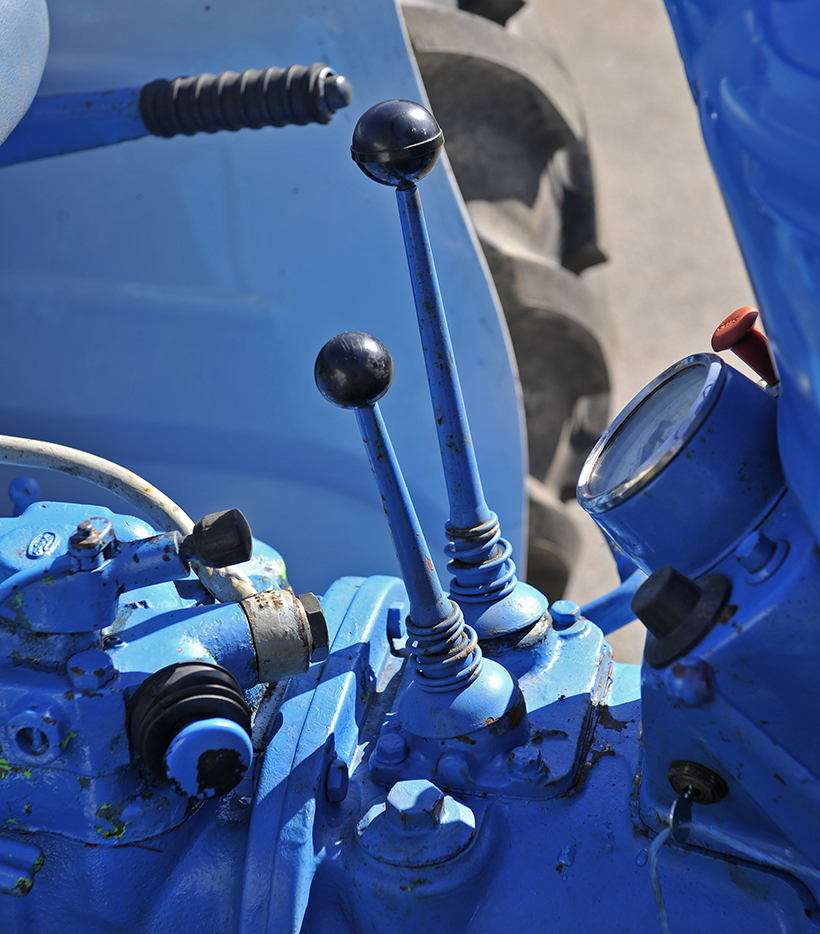
The longer, main gear selector lever, is the one which often shows signs of wear, becoming loose, vague and imprecise to use.
Having said that, it still makes sense to check any prospective purchase as carefully as you can and, if you’re new to old tractor ownership, then take a wise old head with you as a counter-balance to your enthusiasm and excitement. As Bob points out, “there are plenty of examples out there that have been superficially tidied-up, with a bit of fresh paint here and there, and maybe a new tyre or two.
“But there could be no end of problems lurking just beneath the surface; corroded and filled tinwork, a badly worn engine, faulty hydraulics or an abused transmission. If you have a big budget to spend on sorting such things out, then that’s fine. But, if money’s tight and you’re taken-in by an outwardly tidy-looking tractor, then major disappointment and frustration could lie just around the corner.”
Methodical checks
Whenever you’re assessing a prospective purchase, it’s important not to get carried away in the excitement of the moment, and thereby risk overlooking the basics. So always take your time and work methodically around the tractor. First impressions are important; does it look recently-painted, original but well cared for, or generally unloved and down at heel?
Start your inspection at the back, with an assessment of the hydraulic system, checking that it operates smoothly and that there are no obvious fluid leaks – seals do fail with age. Make sure that the PTO clutch is working well, and look for signs of oil leaking out from around the end of the PTO shaft, due to gasket failure (quite common). You might also spot oil leaking from around the end of the PTO clutch shaft, on the nearside of the gearbox casing. There’s an O ring inside which often fails, and changing this is quite a big job.
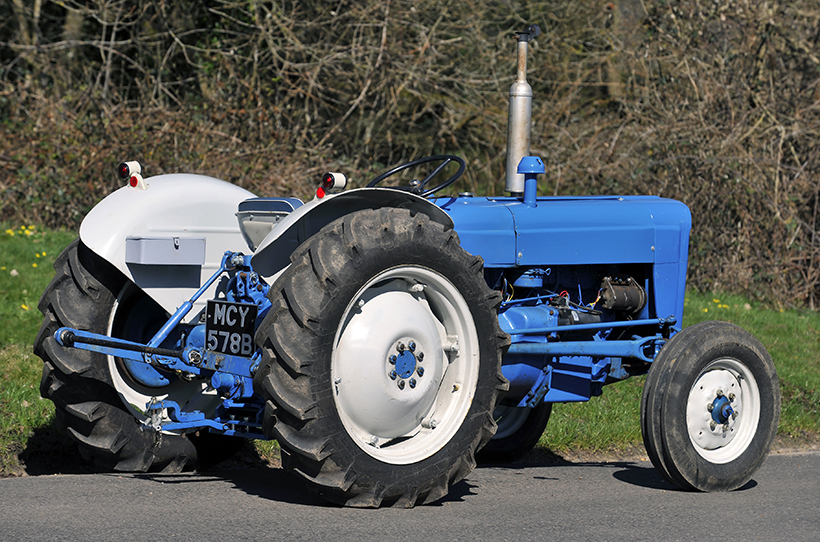
Wheel rims can corrode to the point of splitting, so check them carefully. Replacement wheels are available, but they’re remanufactured items, so not identical to the originals. Check the lower areas of the mudguards for rusting, and the footplates, too. The replacement footplates made these days aren’t as strong as the originals, nor are their support brackets.
If you intend ploughing with the tractor, then it also makes sense to check the draft control mechanism, which can be seized. With the engine running, use a sturdy metal bar to apply pressure to the top link bracket, checking for an appropriate reaction from the draft control mechanism as you do so.
Other oil leaks?
It’s also common for the half-shaft seals to give up the ghost – they harden and crack with age. The tell-tale sign of this is oil that can be found dripping down on to the inside of the rear wheel rims. Bob says: “Putting this right involves removing the half-shafts, renewing the seals and then replacing the shim washer correctly. These fit between the half shafts and the back plates, and must be correct otherwise the oil seal won’t do its job properly. The tolerance specified ranges between four and 12 thou, and getting it right involves some trial and error. With the rear of the tractor raised off the ground, rotating one rear wheel should cause the other one to spin in the opposite direction when the shimming is correct. If both wheels rotate the same way, then everything’s too tight.”
The back axle is essentially strong and reliable, so serious problems are rare, even on those machines which have led the hardest of working lives. But the steering box is a favourite for excessive wear, so check for both rotary and side-to-side play at the steering wheel. The shaft wears, as do the bearings it runs in – the latter can break up. Repair kits are available from specialists like Agriline Products Ltd, although fitting the kit is quite a tricky job.
Bob added: “Looking underneath at the back, check carefully for cracks in the gearbox casing, running from front to back, on the underside. If a tractor used a front loader during its working life, this will have added extra stress to the gearbox casing, making cracking from the oil drain plug backwards more likely. Such damage is often hidden from view by a convenient layer of dirt under there.
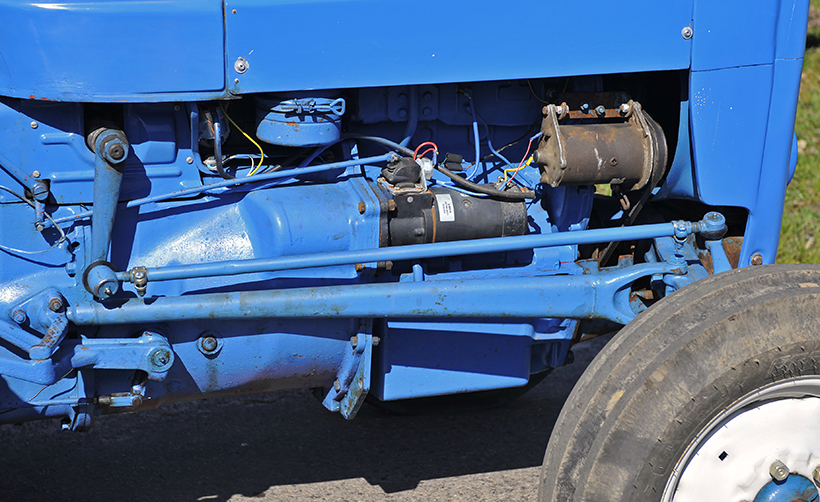
The 2.5-litre, three-cylinder, Perkins-derived diesel engine produces 44.5hp in this guise.
“Also note how worn the pedal surfaces are; the clutch pedal in particular can be worn almost smooth in the worst cases. Additionally, play in the same pedal is worth assessing; it can be bad enough to cause the shaft to foul against the casing as its used.”
Engine trouble
Although the three-cylinder, F3 diesel engine has a good reputation as a reliable performer overall, it’s not immune to neglect. “Be on the look-out for excessive smoking, when running,” Bob advises. “Obviously, you can expect a bit on cold start-up, and when the engine’s working under heavy load but, once warm, normal running should generate little smoke, assuming all’s well inside. Keep an eye anything you see blowing out of either the breather pipe that’s low down on the offside of the engine, or the air intake pipe. Obvious fumes/smoke from either are a bad sign pointing towards serious problems inside the engine.
“Despite being a durable engine, oil leaks can occur, most notably from the rear, main bearing. But the good news is that everything’s fixable. Like all old tractors that survive today, their mechanical condition will be largely dependent on how they’ve been looked after in the past.
“Head gasket failure can be another characteristic failing on this engine, particularly on the hardest-worked units. Look for oil leaking from between the head and the block, at the front of the engine, and along the camshaft side. Also, if the engine sounds rough isn’t firing on all three cylinders, this can be another indicator of a blown gasket (it can breach at the narrowest point, between the bores). But poor engine running can also be caused by a worn fuel injector pump linkage.”
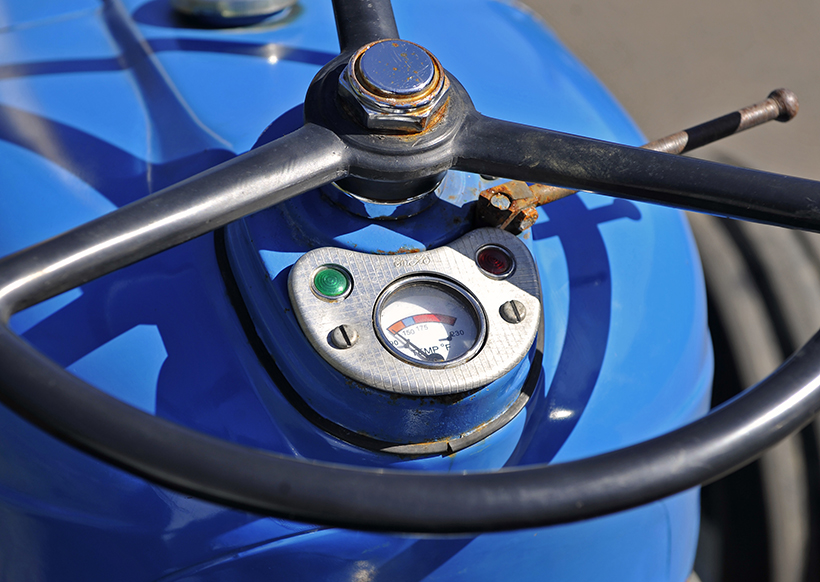
Replacement temperature gauges are cheap to buy, but awkward to replace, so it’s quite common to find a broken one left in place.
On the move
To check the operation of the transmission, you’ll have to give the tractor a test drive. One of the most common, transmission-related problems, according to Bob, is finding that the gearbox jumps out of gear – especially the lower ones – in both high and low ratio. Such a problem will require serious investigation.
“Pay attention to the action of the main gear selector lever,” Bob added. “Ideally it should have a positive action with minimal play. If you find it’s loose and imprecise, then there’s likely to be significant, age-related wear at the bottom of the selector lever, and in the selectors themselves. In the worst cases, the lever can actually jump out of the selectors, leaving the tractor stuck in whatever gear you were in at the time. “Rectifying that involves removing the casing cover and lever, realigning the selectors using a screwdriver, then putting it back together again. It is possible to re-build the ball-like nodule at the bottom end of the gear lever with weld, but care and precision is required if things are to work smoothly afterwards.”
With regard to the tractor’s instruments and wiring, a number of potential problems can be found. “It’s quite common to find that the tacho cable is broken,” Bob explained, “or that there’s an issue with the wiring to the regulator. Replacements are now available for the section of the loom that feeds the instruments, for about £20, but fitting is fiddly.
“You can also buy new looms for the entire tractor (about £40) but, once again, fitting can be tricky and time-consuming. I’ve done it and, despite the relative simplicity of the electrical system on this model, the face that the new loom is supplied fitted with spade connectors slows the job right down – all the tractor’s nut-and-bolt-type electrical fixings have to be replaced.
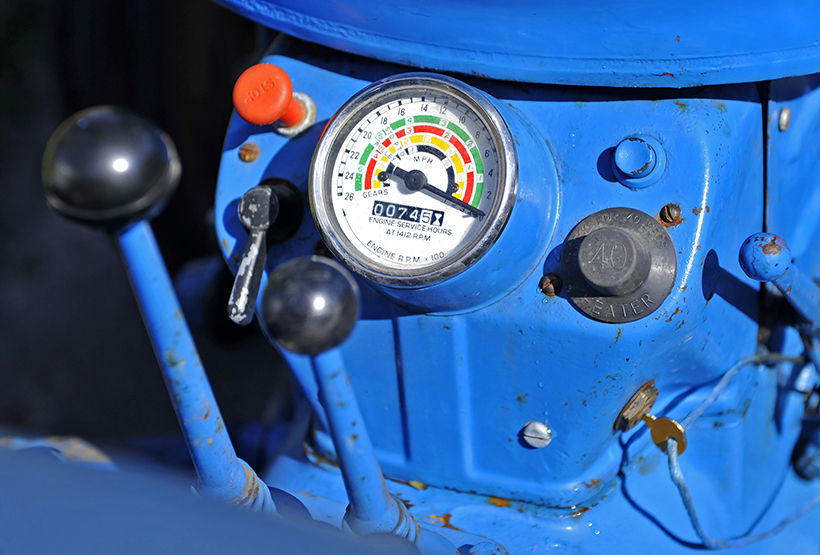
This NP Super Dexta has been fitted with a newer style engine stop control (top left); the original would have been black, not red. Incidentally, if you need to replace the cable that runs to this control, try to specify one that’s ‘soft’, rather than rigid steel wire, as you’ll find it much easier to fit and use. You can’t set any store by what’s showing on the engine service hours counter, these days.
“If you need to remove the top instrument binnacle, make sure that you replace all the rubber insulators properly during reassembly. The bulb holders for the ignition and oil pressure warning lights are live so, without their rubber spacers correctly positioned, the whole binnacle can become ‘live’, which isn’t ideal!”
Other potential issues
Bob added: “Typically, you’ll find that these engines run at slightly different temperatures, from tractor to tractor. However, most should settle between 150 and 160°F on the gauge – in the orange or blue sections – during normal use. The gauges themselves can give problems and sometimes get ignored as, although they only cost about £16 to replace, fitting a new one involves a lot of work. The steering wheel and fuel tank have to be removed to create the access needed to extract the original gauge, which itself can be a struggle to get out due to rust!
“Incidentally, once the engine is fully warm, keep an eye on the oil pressure warning light. It should stay off but, if you spot it flashing, this can point towards serious internal engine wear, an issue with the oil pump or a blocked oil filter.
“Finally, with regard to the engine, if you find yourself needing to buy a new fan belt, take care that you’re supplied with the right size, especially if you’ve also had to fit a new pulley on the alternator – often necessary as these become brittle and crack with age. With a pulley fitted, the ‘Dexta’ belt will be too short, and you’ll need to specify one for a Massey Ferguson 35.”
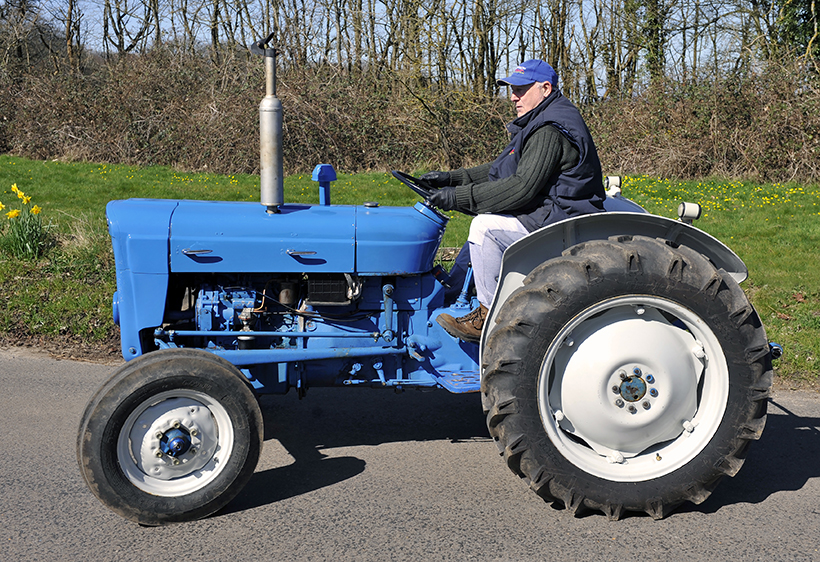
One of the Dexta’s big attractions has always been its manageable size. Combine that with a 44.5hp engine, and you have a very appealing – and still useful – combination.
At the front of the tractor, inspect the steering set-up to check for wear. Check the steering joints for excessive play, and rock the top of the front wheels to test for stub axle and/or wheel bearing play. Take some time to inspect the condition and fit of the nose cone, and its support brackets. If its original, then finding signs of impact damage is almost inevitable. Rust can also be a problem, resulting from badly-made repairs, or from the build-up mud on the inside. You can also expect to find corrosion in the mudguards, but remanufactured replacements are available.
All-in-all, though, buying one of these last Fordson tractors shouldn’t be a desperately hard process. There are still good deals out there to be had and, even if you do get one that turns out to be worse than you initially thought, it’s not the end of the world. Everything’s doable, technical and independent specialist support levels are great and, with prices starting to move in the right direction, now, what’s not to like about the New Performance Super Dexta?
For a money-saving subscription to Ford & Fordson Tractors magazine, simply click here



